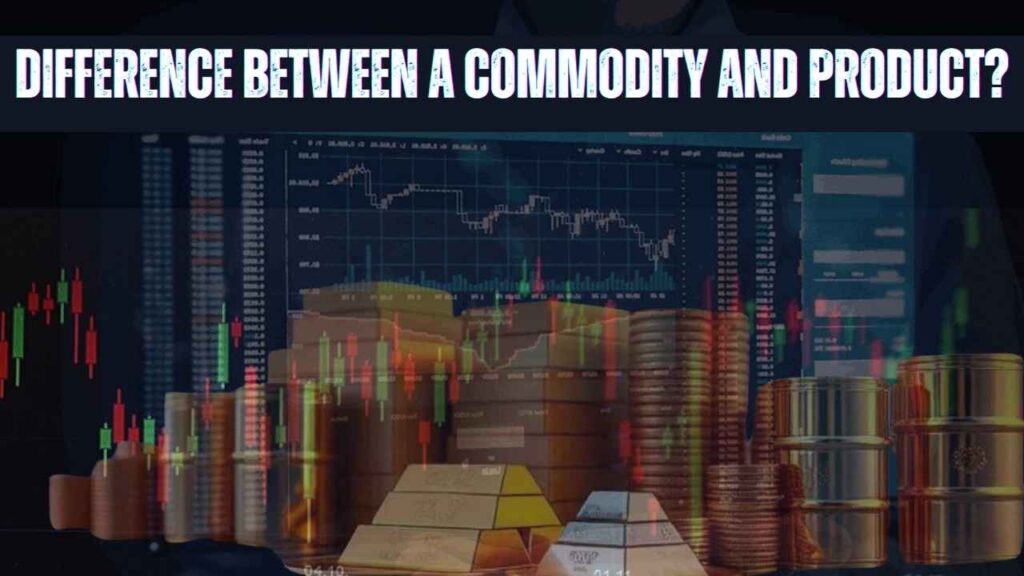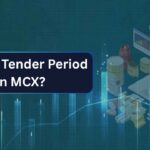For investors, traders, and companies alike, comprehending the difference between a commodity and a product is essential. The terms are at times confused for one another but are, in fact, descriptive of distinct kinds of assets possessing different features, pricing systems, and functions in the economy. In this authoritative guide, we will investigate the most significant distinctions between commodities and products, describe how they trade, and touch on their peculiar advantages and challenges.
In the business and financial world, assets are generally divided into different categories depending on their nature and market behavior. Two such widely debated categories are commodities and products. While commodities are raw materials that are the building blocks for most products, products are the finished products that customers purchase. It is important to understand the subtleties between these two categories in order to enable investors to customize their strategies, businesses to streamline their supply chains, and customers to make informed decisions.

What is a Commodity?
Commodities are simple goods or raw materials that are substitutable with other goods of the same kind. They are usually standardized and exchanged on commodity exchanges throughout the world. Everyday examples of commodities are:
- Metals: Gold, silver, copper
- Energy: Crude oil, natural gas, coal
- Agricultural Products: Wheat, corn, coffee, soybeans
- Soft Commodities: Cotton, sugar, cocoa
Key Characteristics of Commodities
- Standardization: Commodities are uniform in quality and can be traded on a one-to-one basis, regardless of their origin.
- Fungibility: Because of their standardization, one unit of a commodity is essentially identical to another unit.
- Market-Driven Pricing: Commodity prices are determined largely by global supply and demand dynamics, making them highly sensitive to external factors like weather, geopolitical events, and economic conditions.
- Hedging Tool: Investors often use commodities as a hedge against inflation and currency fluctuations.
What is a Product?
Products are commodities or services that have been processed or manufactured and are ready to be consumed. In contrast to commodities, products are usually distinguished by brand, quality, design, and other special characteristics. Examples of products are:
- Consumer Electronics: Smartphones, laptops
- Apparel: Clothing, footwear
- Automobiles: Cars, motorcycles
- Processed Foods: Snacks, beverages
Key Characteristics of Products
- Differentiation: Products are distinguished by quality, design, branding, and features that set them apart from similar goods.
- Value Addition: Products typically undergo multiple processing stages that increase their value beyond that of the raw commodities used to produce them.
- Pricing Flexibility: The pricing of products is influenced by factors like brand reputation, marketing efforts, and consumer demand rather than just supply and demand.
- Retail Focus: Products are sold directly to consumers, often through retail channels, and target specific market segments based on consumer preferences.
Key Differences Between Commodities and Products
1. Nature of the Asset
- Commodities: Raw materials with uniform standards.
- Products: Finished goods with added features and differentiation.
2. Value Addition
- Commodities: Typically unprocessed and sold as-is (e.g., crude oil, gold).
- Products: Undergo processing and manufacturing, increasing their value (e.g., smartphones, processed foods).
3. Pricing Mechanism
- Commodities: Prices are determined by global supply and demand and can be highly volatile.
- Products: Prices are set based on factors such as brand, quality, and market positioning, often allowing for higher margins.
4. Market Dynamics
- Commodities: Traded on commodity exchanges with standardized contracts.
- Products: Sold through retail and wholesale channels, often with significant differences in quality and customer appeal.
5. Usage
- Commodities: Serve as inputs in the production of products.
- Products: End-use items purchased by consumers for their functionality, aesthetics, and brand value.
Why Understanding the Difference Matters
Understanding the differences between commodities and products is vital for several reasons:
- Investment Strategy: Investors can tailor their strategies to include a mix of commodities and products, balancing risk and reward across diverse asset classes.
- Supply Chain Management: Businesses can optimize procurement and production processes by distinguishing between raw materials and finished goods.
- Pricing Analysis: Accurate pricing of commodities versus products helps in forecasting market trends and making informed purchasing decisions.
Final Thought
The difference between commodities and products is crucial to understanding the contemporary economic environment. Commodities form the raw building blocks that power manufacturing, whereas products are the value-added final goods that power consumer economies. Both asset classes are vital to the global economy, and knowing their differences can result in wiser investment choices, superior business planning, and even more intelligent consumer decisions.
Whether you’re an investor looking to diversify your portfolio or a business professional optimizing supply chain processes, grasping the nuances between commodities and products is a key step toward success in today’s market.
Frequently Asked Questions (FAQ)
Q1. What is the main difference between a commodity and a product?
A: A commodity is a basic, standardized raw material, whereas a product is a finished good with added features and value.
Q2. How are commodities priced?
A: Commodity prices are determined by global supply and demand dynamics and are influenced by factors such as weather, geopolitical events, and economic conditions.
Q3. Can products be traded like commodities?
A: Generally, products are sold through retail or wholesale channels and are not traded on commodity exchanges. Their prices are influenced more by brand value and marketing.
Q4. Why is diversification important in investment?
A: Diversifying your investment across commodities and products can reduce risk and provide stability by balancing volatile commodity prices with the relatively stable returns of branded products.
Q5. How do I decide whether to invest in commodities or products?
A: Your choice should depend on your investment goals, risk tolerance, and market knowledge. Commodities can be a good hedge against inflation, while products may offer higher value-added returns.











